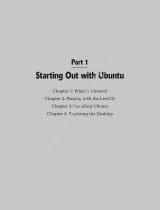
Contents
Linux Software Developers Kit (SDK) User Guide 6
B. Differences Between µClinux and Standard Linux 75
C. Troubleshooting 76
Technical Support .................................................................................................................... 76
List of Figures
Figure 2-1. Values .......................................................................................................................... 14
Figure 3-1. DeviceInstaller Window ............................................................................................... 19
Figure 3-2. Firmware Upgrade Window ......................................................................................... 20
Figure 3-3. Serial Recovery Window ............................................................................................. 20
Figure 3-4. Serial Recovery Status Window Example for a MatchPort AR ................................... 21
Figure 3-5. Serial Recovery Results Window ................................................................................ 21
Figure 3-6. dBug Configuration Window ........................................................................................ 22
Figure 3-7. Output from dbug-config program ............................................................................... 25
Figure 5-1. Flash Layout – MatchPort AR, EDS1100, and EDS2100 ........................................... 33
Figure 5-2. Flash Layout – XPort Pro ............................................................................................ 34
Figure 6-1. uClinux Kernel/Library/Defaults Window ..................................................................... 43
Figure 6-2. uClinux Customize Application/Library Settings Window ............................................ 44
Figure 6-3. uClinux Save Configurations Window ......................................................................... 44
Figure 6-4. uClinux Save Configurations Window ......................................................................... 45
Figure 6-5. uClinux Distribution Configuration Window ................................................................. 45
Figure 9-1. uClinux Distribution Configuration Window ................................................................. 51
Figure 9-2. uClinux Kernel/Library/Defaults Selection Window ..................................................... 52
Figure 9-3. uClinux Save Settings Window.................................................................................... 52
Figure 9-4. uClinux BusyBox Selection Window ............................................................................ 53
Figure 9-5. uClinux BusyBox Configuration Window ..................................................................... 53
Figure 10-1. Lantronix Applications Configuration Window ........................................................... 54
Figure 10-2. Serial-To-Ethernet Converter Screen ........................................................................ 55
Figure 10-3. Serial-To-Ethernet Tunnel Setup Screen .................................................................. 55
Figure 10-4. Serial-To-Ethernet Tunnel Setup Screen with SSH .................................................. 56
Figure 10-5. Serial-To-Ethernet SSH Setup Screen ...................................................................... 56
Figure 10-6. Serial-To-Ethernet Tunnel Setup Screen with SSL ................................................... 57
Figure 10-7. Serial-To-Ethernet SSL Setup Screen ...................................................................... 58
Figure 10-8. Serial-To-Ethernet GPIO Setup Screen .................................................................... 59
Figure 10-9. CP Manager Interface Overview ............................................................................... 61
Figure 11-1. Lantronix Applications Configuration Window ........................................................... 64
Figure 11-2. Serial-To-Ethernet VIP Setup Screen ....................................................................... 65
Figure 13-1. Serial-To-Ethernet System Setup Screen ................................................................. 71






















